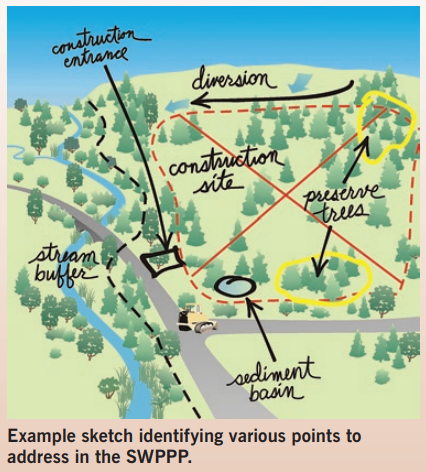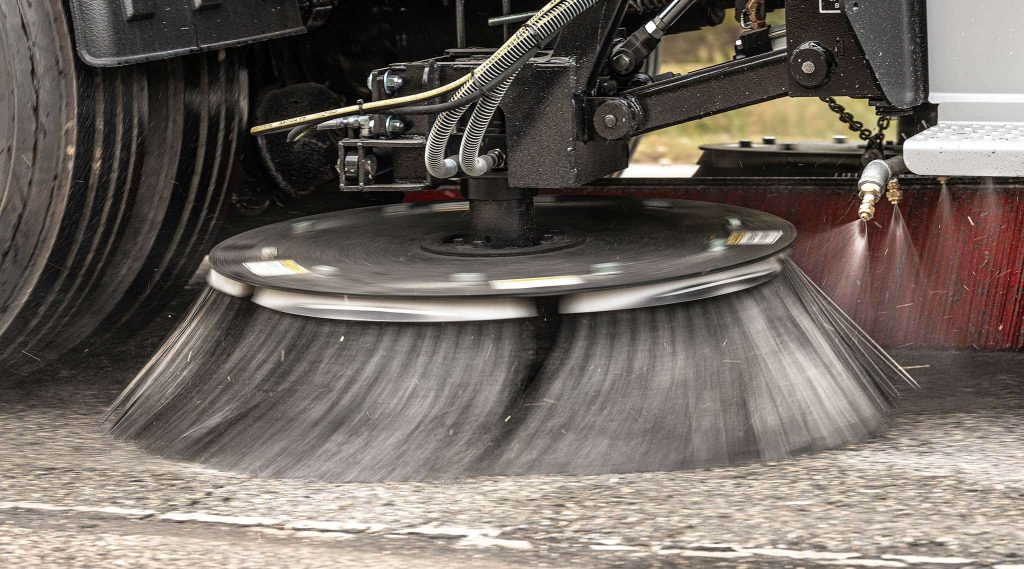Streets, roads, highways and parking lots accumulate pollutants that, when combined with stormwater, can lead to water quality impacts. Street sweeping can minimize some of these pollutants, including sediment, debris, yard waste, trash, deicing materials and trace metals. It can also improve the aesthetics of municipal roadways, control dust and reduce the frequency of catch basin or storm drain cleaning. An effective municipal street sweeping program can meet regulatory requirements, assess street sweeping effectiveness, and minimize pollutants in roadways.

Image Source: EPA
Applicability
Most urban areas sweep their streets, often as an aesthetic practice to remove trash, built-up sediment and large debris from curb gutters and increasingly as a water quality practice to reduce stormwater pollutant loadings. Effective street sweeping programs can remove several tons of debris a year from city streets (Franklin Soil and Water Conservation District, 2017) minimizing pollutants in stormwater. In colder climates, street sweeping during the spring snowmelt can reduce pollutants in stormwater from deicing materials, sand and grit.
Implementation
Creating (and following) a schedule can increase the efficiency of a street sweeping program. A successful program should be flexible to accommodate climate conditions and areas of concern. Municipalities should base their identification of areas of concern on traffic volume, land use, field observations of sediment and trash accumulation, and proximity to surface waters (MPCA, 2017). Street sweeping material often includes sand, deicing materials, leaves and miscellaneous debris.

Effectiveness
Street sweeping can be an effective way to reduce sediment loadings to downstream waterbodies. This can be important, not just because of sediment export concerns, but because sweepings can have variable and sometimes high concentrations of heavy metals, petroleum hydrocarbons and nutrients. For example, Miller et al. (2016) compiled results from a literature review and an online survey of municipal street sweeping programs and found reported concentrations of lead and heavier petroleum hydrocarbons (e.g., motor oil) that were sometimes in excess of Ohio beneficial reuse standards. The effectiveness of street sweeping varies considerably depending on geographic location, sweeping frequency and equipment used.
A street sweeping program can be an effective tool for municipalities for pollutant removal and good housekeeping. Using modern efficient street sweepers may reduce the need for other structural stormwater controls. If you are in need of street sweeping services, don’t hesitate to contact us at 1-888-SWEEPING or contact us here and we will follow up with you.
Content on this page (besides photography) is sourced by the EPA and it’s sources from this PDF document.


